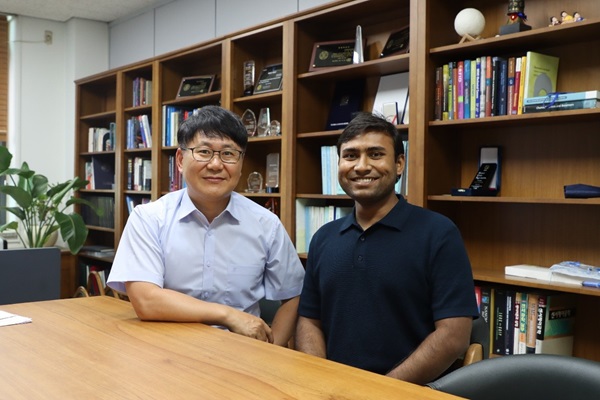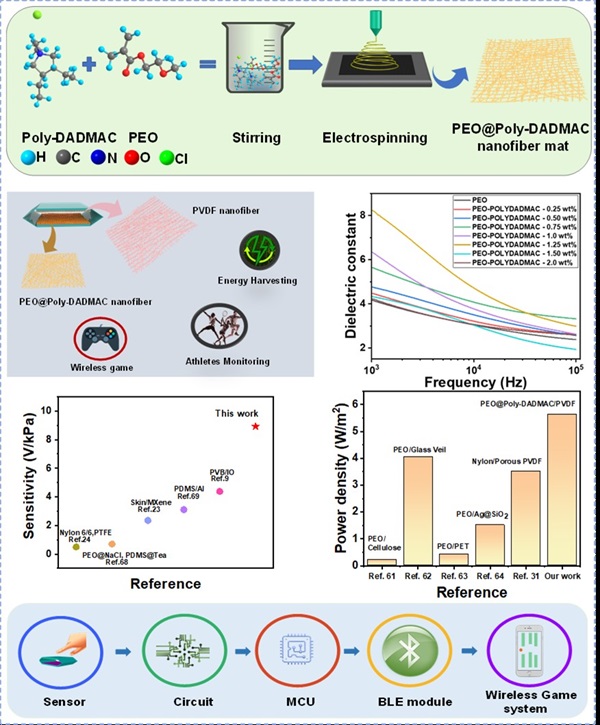Eco-friendly Nanogenerator: High-power Electricity from Daily Life
- admin
- 2024-07-03
- 582
Professor Jaeyoung Park's Research Team (Electronic Engineering) Develops an Eco-friendly Nanogenerator Producing High-power Electricity from Daily Life
-
Development of High-output Triboelectric Nanogenerator and PEO@Poly-DADMAC
Composite Nanofibers with High Cationic Properties -
-
Application to Wearable Medical/Healthcare, Soft Robots, Electronic Skin,
Human-Machine Interface Power-free Pressure Sensors, and Eco-friendly Power
Sources -
-
Published as a Cover Paper in the Internationally Renowned Journal, Advanced
Functional Materials by Wiley (IF:18.8) -
The
research team of Professor Jaeyoung Park from the Department of Electronic
Engineering at Kwangwoon University has synthesized Poly-DADMAC
(Polydiallyldimethylammonium Chloride) and PEO (Polyethylene Oxide) polymer
electrolytes, applied electrospinning technology, and developed composite
nanofiber materials with very high electric positivity for the first time in
the world. Using these materials, they successfully developed a high-output
wearable triboelectric nanogenerator and power-free pressure sensors.
The
research was supported by the Ministry of Science and ICT under the National
Research Foundation's Mid-Career Researcher Support Program
(NRF-2020R1A2C2012820) and the Ministry of Trade, Industry and Energy's
Industrial Technology Innovation Program (RS-2022-00154983, Development of
Autonomous Power Sensor Platform for Low-power Sensors and Actuators). The
research results were published in Advanced Functional Materials (IF: 18.8),
the world's leading journal in functional materials and devices, by Wiley. (https://doi.org/10.1002/adfm.202403899)

Professor
Jaeyoung Park from the Department of Electronic Engineering at Kwangwoon
University and Ph.D. student M. Robiul Islam (starting from left in the photo)

Performance characteristics of high-output triboelectric nanogenerators and power-free pressure sensors based on PEO@Poly-DADMAC composite nanofibers using electrospinning.